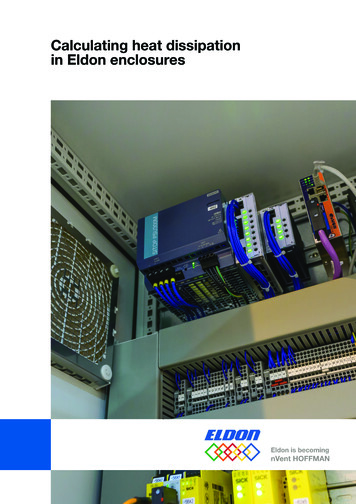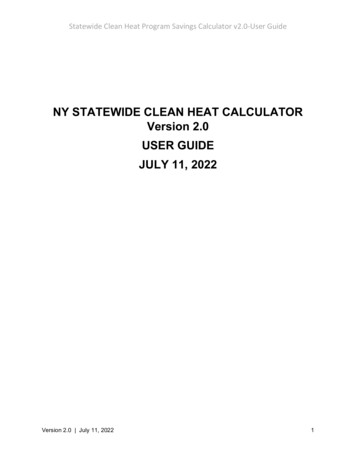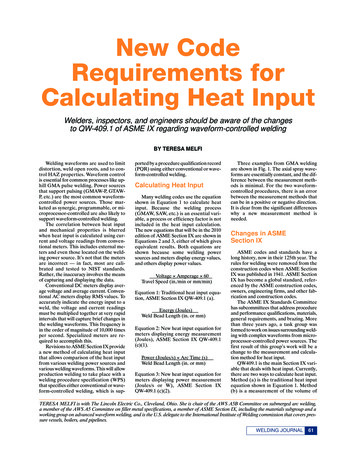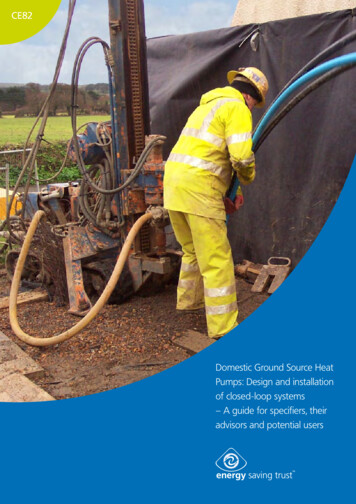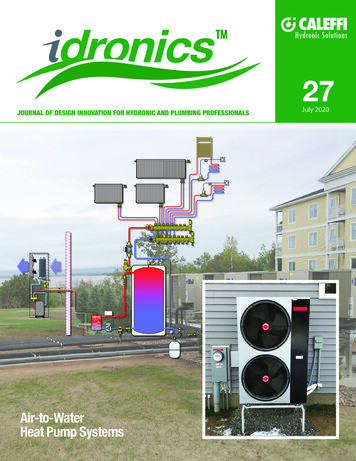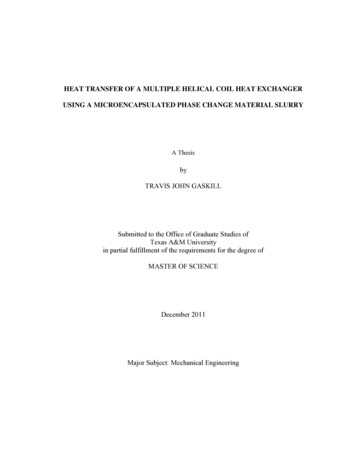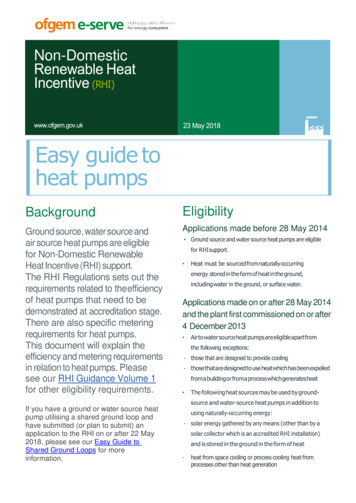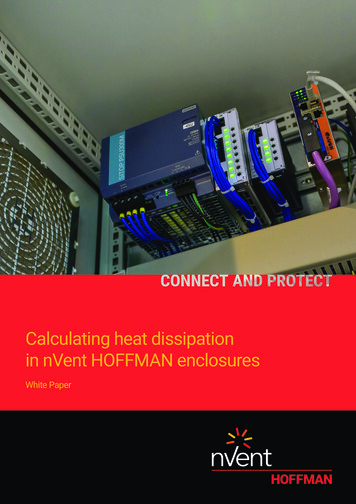
Transcription
Calculating heat dissipationin nVent HOFFMAN enclosuresWhite Paper
Heat is the main reason for electronic component failure inside an enclosure. The servicelife of these components is halved, and the failure rate is doubled in the event of a 10 Ktemperature increase relative to the maximum permitted operating temperature.Dealing with heat losses in enclosures depends on whether the enclosure is equippedwith cooling accessories, like filter fans and cooling units, and whether the enclosure issupposed to be “air tight”. For an enclosure that has cooling accessories installed, heatlosses can be dissipated through active heat dissipation. If an enclosure has to remainclosed without any cooling accessories, heat can only be dissipated through the enclosurewalls.The most important factor in what type of heat transfer is possible is the maximumambient temperature at the enclosure location and the maximum temperature inside theenclosure. The maximum temperature increase relative to the environment inside theenclosure can be determined from the following equation:(Ti-Tu) Qv / (k*A) Where:QvTuTikA- Watts to dissipate- Ambient temperature- Permitted internal temperature- Heat transfer coefficient- Enclosure surface areaTo choose the most suited climate control solution for an enclosure, it is necessary tocalculate the heat loss, ‘Qv’, in the enclosure.The following parameters also need to be calculated.Qv - Heat loss installed in the enclosure (W)Qs - Thermal radiation via enclosure surface Qs k *A * TQk - Required useful cooling output (W) T - Temperature difference between inside and outside temperature (K) T (Ti-Tu)Qe - Required cooling output (W)Qe Qv - QsV- Required volumetric flow of fan and filter unit (m³/h)Approximate calculation V (3.1*Qv)/ T2HEAT DISSIPATIONSUBJECT TO CHANGE WITHOUT NOTICEHOFFMAN.nVent.com www.eldon.comHOFFMAN.nVent.com www.eldon.comHEAT DISSIPATION3
The maximum Internal enclosure temperature is determined by the electrical componentsused in the enclosure. As far as the recommended internal enclosure temperature isconcerned, an average value of 35 C has become the norm.Single enclosure, free standing on all sidesA 1.8 x H x (W D) 1.4 x W x DIn addition, the enclosure surface area must also be determined according to theinstallation type.Conclusions:The tables below show the amount of heat that is dissipated (W) through the enclosuresurface, when the ΔT is 20K. The temperature difference between the ambient temperatureand the maximum permitted internal temperature is then 20K:Single enclosure, for wall mountingA 1.4 x W x (H D) 1.8 x H x DTi (internal temperature) 45 CTu (Ambient temperature) 25 CΔT (Ti-Tu)ΔT 45-25First or last enclosure in a suite, free-standingA 1.4 x D x (W H) 1.8 x W x HΔT 20KExampleFree standing enclosure, MCS18044R5Ti (internal temperature) 50 C,Tu (Ambient temperature) 40 C.First or last enclosure in a suite, for wall mountingA 1.4 x H x (W D) 1.4 x W x DΔT (Ti-Tu)ΔT 50-40ΔT 10KEnclosure Heat dissipation value according to the table below (when ΔT is 20K):310WEnclosure within a suite, free standingA 1.8x W x H 1.4 x W x D H x D310 / 20K 15,5W15,5 x 10K 155 WIf the ΔT 10K, the natural heat dissipation of a free standing MCS18044R5 is 155WAll data is calculated by using the formulas presented in this paper.If you find that the natural heat dissipation presented in these lists is not enough for theenclosure application at hand, active cooling accessories may have to be installed inthe enclosure. Such accessories could be filter fans, heat exchangers, or Vortex coolers.Take the relevant information you have on your application and go to nVent HOFFMAN’swebsite and the thermal software there to calculate cooling, heating, and control accessoryrequirements.Enclosure within a suite, for wall mountingA 1.4 x W x (H D) H x DEnclosure installation type according to IEC 60 890Enclosure within a suite, for wall mounting,covered roof surfacesA 1.4 x W x H 0,7 x W x D H x DThe following tables demonstrate the amount of heat that is dissipated through theenclosure surface.All data is calculated using formulas mentioned in this paper.If you need further assistance to determine your cooling, heating, and control accessoryneeds, please go to the nVent HOFFMAN website and use the Thermal software to helpyou with your climate calculation.4HEAT DISSIPATIONSUBJECT TO CHANGE WITHOUT NOTICEHOFFMAN.nVent.com www.eldon.comHOFFMAN.nVent.com www.eldon.comHEAT DISSIPATION5
Floor Standing EnclosuresSteel Range Mild Steel Combinable, Single Door MCSFloor Standing EnclosuresSteel Range Mild Steel Combinable, Double Door MCDW ( T 20 K)Enclosure6W ( T 20 000100060072663867358
To choose the most suited climate control solution for an enclosure, it is necessary to calculate the heat loss, 'Qv', in the enclosure. The following parameters also need to be calculated. Qv - Heat loss installed in the enclosure (W) Qs - Thermal radiation via enclosure surface Qs k *A * T Qk - Required useful cooling output (W)
